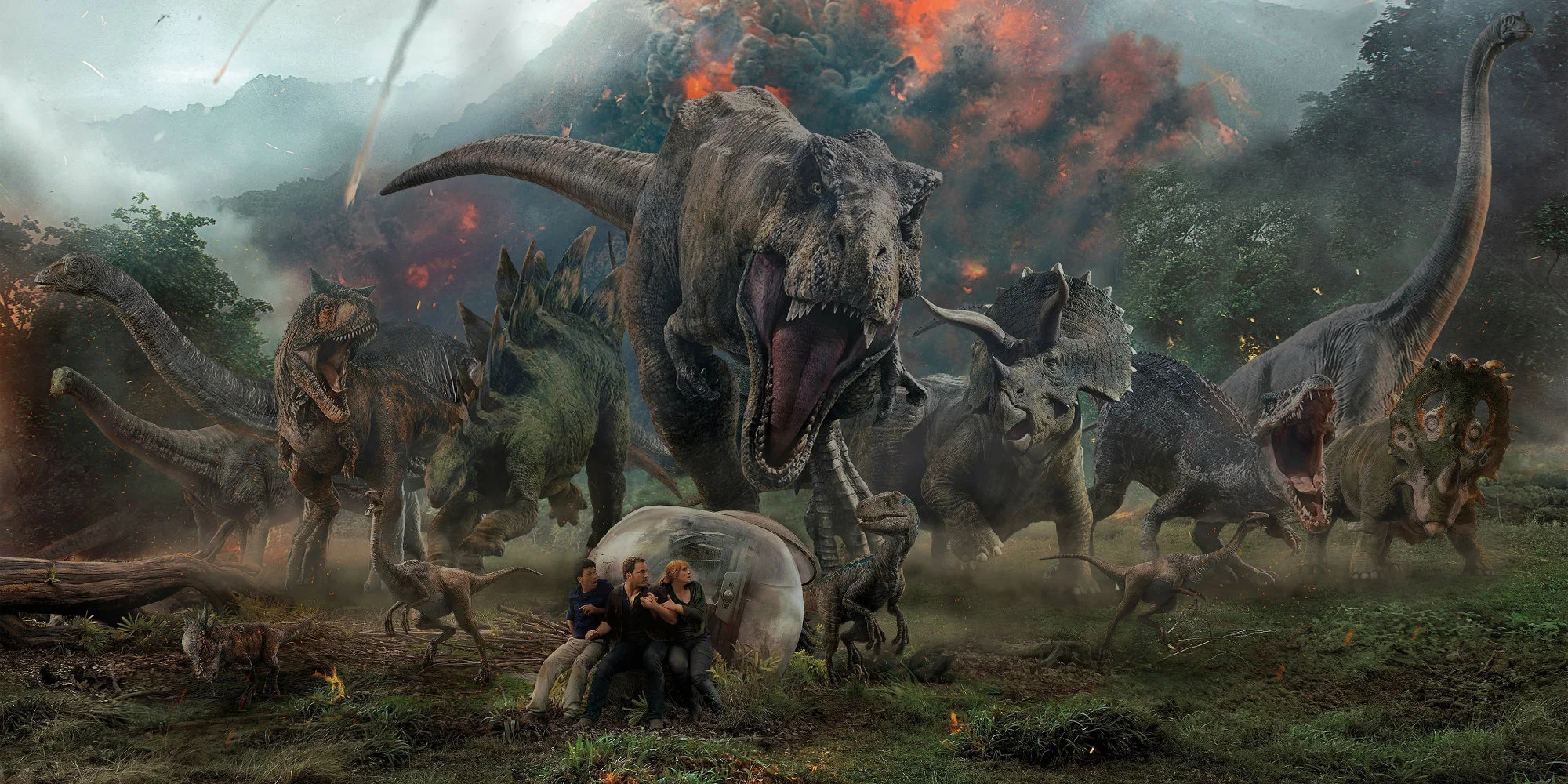Monster Films are Taking Over at the Box Office: We Need to Talk
by: keaton marcus
Creature-FeatureS and Their Fame in the Box Office
Jurassic World: Fallen Kingdom
THE BIGGEST CREATURE-FEATURE: “JURASSIC WORLD”
An Image of Jurassic World’s weekend dominance.
Here is an image of the biggest creature-feature of all-time, Jurassic World, which is a reboot/sequel of the original Jurassic Park trilogy. As you can see, the monster picture opened to a mammoth 208.8M domestically from 4,274 locations—averaging $48,855 per-screen. The film had surprisingly long-legs, and easily managed a domestic sales total of 652.2M, and a global total of 1.6B—ranking seventh on the all-time domestic list, and sixth on the worldwide.
THE SECOND BIGGEST “JURASSIC WORLD: FALLEN KINGDOM”
The sequel to Jurassic World, Fallen Kingdom managing to maintain box office velocity.
Universal’s sequel, Jurassic World: Fallen Kingdom ended the second-biggest creature-feature film at the box office, as you can see, the dino-themed picture debuted with 148M from 4,475 locations, averaging $33,078 per-screen. While the three-day was supposedly around 29% less than its predecessor’s opening—the film still managed massive velocity, and worked to top the biggest Summer weekend that year. It held well to a finish of 417.7M domestically, and over 1.3B globally. A third film is in development.
THE THIRD BIGGEST (FIRST WITH INFLATION) “JURASSIC PARK”
In 1993, Steven Spielberg’s Jurassic Park may have started small, but over the year, it became a global empire.
In the screenshot of the 1993 classic, Jurassic Park, you can see its actually only decent debut of just over 47M. However, when you take in the inflation, you get a massive 83.2M start today. Not only that, the film held remarkably well, dipping only 18% through its second weekend—managing to top 357M before it was re-released to gross over 402M domestically, and over 1 billion globally, making it the third biggest creature-feature to date. Furthermore, when you take in inflation for the totals, you get a domestic gross of 632.6M without the re-release, but with it, you have over 712M domestically, and 1.8B worldwide. Giving it the title of biggest creature-feature, if you count the re-release, and the inflation difference.
THE FOURTH BIGGEST “THE LOST WORLD: JURASSIC PARK”
Another Spielberg-directed Jurassic feature, The Lost World hit theaters in 1997—and the photo sees the increasing popularity.
Obviously, cause of the massive hit Jurassic Park was, especially the inflation—Spielberg conjured a sequel dubbed The Lost World four years later. The film managed a massive 4-day weekend of 90.1M, showcasing the increasing popularity of the blooming franchise (with inflation, that’s a debut over 143M). While the long-run was not quite impressive as its predecessor, with inflation—the sequel ends grossing 365.3M domestically, and globally, the total tallies to over 986M worldwide. While those numbers still trail the original (even non-inflation), it means audiences want a conclusion to the trilogy.
THE FIFTH BIGGEST “KING KONG” (2005)
Peter Jackson’s reboot of King Kong taking the box office.
The original King Kong film hit theaters in 1933, and terrified the globe, becoming an instant classic to audiences everywhere. It had many sequels, and reboots—heck, the giant ape faced Godzilla once. Peter Jackson, however, was the first to adapt the classic with CGI, and special effects galore—resulting in a 207M budget. The reboot topped the box office in 2005, with a three-day weekend of 50.1M, and a five-day of 66.1M—with inflation, that means a Fri-Sun total of 65.5M, and the Wed-Sun gross of 86.5M. The film ended with over 218M domestically, and 550.5M globally—take in the inflation prices, you have a North American gross of 285.8M, and a worldwide total of 721.2M. While that’s not as big as our dino pals, it sure is large.
So what is it with monster films and their massive box office numbers? It’s become a major part of our lives, from the year 1933, all the way here. In the olden days, when creature-features such as the Alien franchise, or the first Jurassic Park picture, heck even Jaws came to theaters it was because the audiences wanted the combo feel of horror, and action. Today, with the reboots such as Jurassic World, or expensive sequels such as Kong: Skull Island, or Godzilla: King of the Monsters—its more for the dazzling special effects, and the big action sequences. What has the genre become today? The increasing lack of scares, the 200M production budgets—and what will happen in the future, will directors decide to go back to the genre’s old roots, or will they continue dazzling audiences with large-scale visuals, and not jump-scares?






